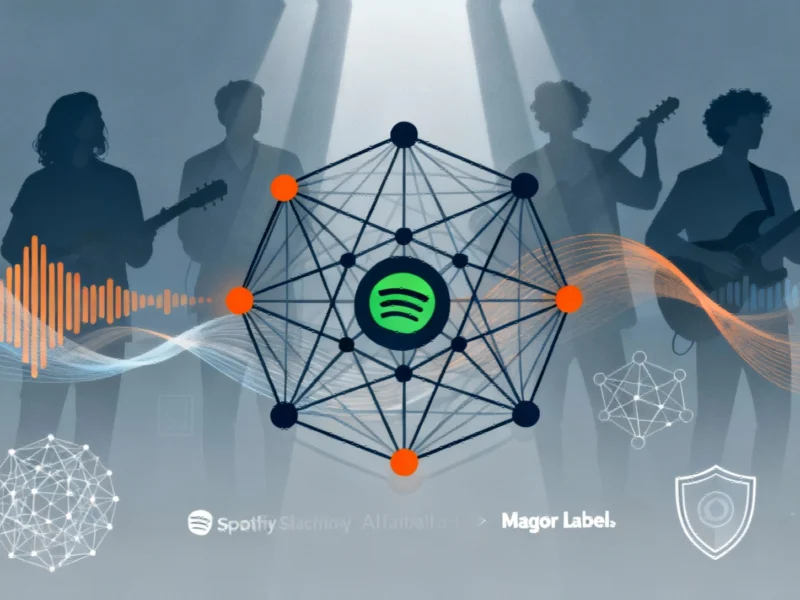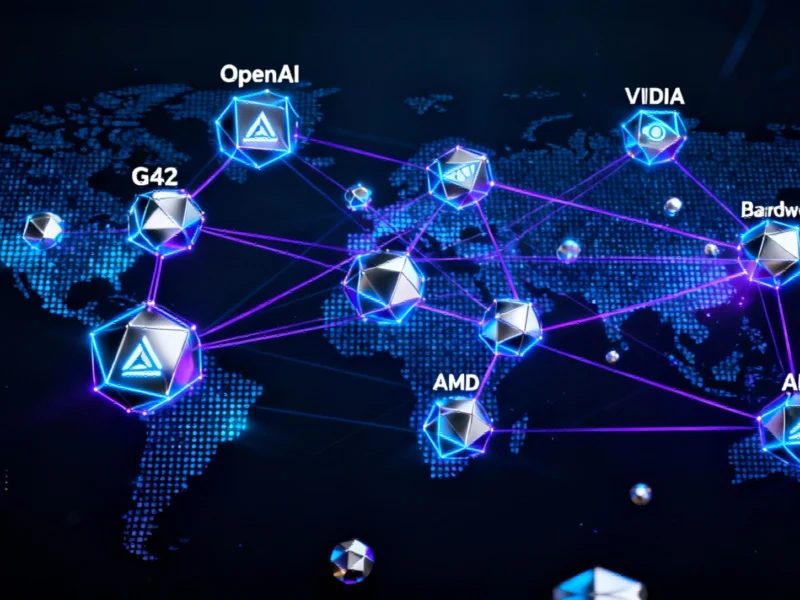TITLE: Oracle’s Open AI Strategy Pushes Enterprise Adoption While Legacy Systems Get New Life
As Oracle makes sweeping artificial intelligence announcements across its cloud infrastructure, applications, and data analytics platforms, industry experts caution that enterprise adoption pathways remain complex despite the company’s ambitious push. Oracle’s aggressive AI positioning comes as technology vendors across the spectrum are racing to integrate AI capabilities into their offerings, creating both opportunities and challenges for industrial computing environments.
At Oracle’s recent AI World event in Las Vegas, the company demonstrated its comprehensive commitment to artificial intelligence, with everything from keynotes to technical sessions focused exclusively on AI implementations. According to Gartner vice president and analyst Balaji Abbabatulla, “There’s a tagline that says AI changes everything, and that definitely holds true for Oracle. They’re definitely going all in for AI. Everything at the conference, everything in the keynotes, is all about AI.” This strategic shift represents a significant evolution for the company that built its enterprise dominance through databases and acquired applications.
Expanding AI Ecosystem with Third-Party Integration
Oracle’s announcements included substantial enhancements to its Fusion cloud application portfolio, which encompasses ERP, finance, HR, and payroll systems. The company is expanding its AI Agent Studio for Fusion, enabling developers to build, test, and deploy AI agents with extended large language model support from third-party providers including OpenAI, Anthropic, Cohere, Google, Meta, and xAI. This open approach mirrors trends seen across the industry, where major technology providers are embracing third-party AI integrations to enhance their platform capabilities.
Additionally, Oracle unveiled an agent marketplace for Fusion Cloud Applications customers, allowing organizations to select pre-built AI agents from consulting partners including Alithya, Apex IT, Grant Thornton, Huron, IBM Consulting, Infosys, Wipro, Accenture, Deloitte, KPMG, and PwC. This marketplace approach aims to accelerate AI adoption by providing validated solutions from trusted implementation partners.
The Data Quality Imperative for AI Success
Despite the availability of off-the-shelf AI agents, experts emphasize that successful implementation requires significant preparatory work. Abbabatulla notes that “Oracle would like us to think that there’s not much work there, but when you look at data quality and the maturity of data management across customer segments, that essentially defines who can get business value out of AI agents as a technology component.”
The critical challenge lies in what Abbabatulla describes as “the last mile of inferencing or reasoning which really converts the trained AI to an AI that can deliver meaningful, relevant decisions that you can act on.” Organizations with established data management practices, robust data governance, and high data quality standards will likely achieve business value from AI implementations more rapidly than those without these foundations. This data dependency echoes challenges seen in other technology domains, where platform updates can create unexpected dependencies and compatibility issues that impact system performance.
Multi-Cloud Strategy and Open Partnership Approach
Oracle’s strategy includes significant multi-cloud flexibility through its “database@” offering, which enables users to house Oracle databases within hyperscaler datacenters on OCI hardware across Google Cloud, Azure, and AWS. Kevin Dattolico, Americas regional CEO for Syntax, an Oracle professional and managed services provider, observes that “over the last few years, Oracle had become the open partner. They’ve partnered with all the different LLM providers, and that openness is only for an Oracle solution, but also the rest of the data repositories that are out there.”
This approach allows customers who have developed applications within specific cloud providers to bring Oracle data closer to those applications without costly migration projects. Dattolico emphasizes that “customers who have started to go down a path developing these new applications [in a cloud provider] now they want to be able to bring the data closer to those applications. Oracle have put OCI, in essence, to run within the same confines as AWS, Azure and GCP, which then allows the value of the OCI platform to be realized within those hyperscalers.”
Legacy System Integration: Oracle’s Competitive Advantage
Oracle has distinguished itself from application vendor competitors by extending AI agent capabilities to legacy systems. While cloud-native rivals like Workday and Salesforce naturally incorporate AI, and SAP restricts its Joule agent system to the latest S/4HANA cloud platform, Oracle enables users of its legacy E-Business Suite (EBS) to leverage AI agents. This is particularly significant given that many industrial computing environments continue to rely on established platforms that require ongoing support and compatibility with new technologies.
According to Abbabatulla, both EBS and PeopleSoft—the widely used HR and financial system Oracle acquired in 2005—can connect with the LLM agent platform via OCI. “You can do all that stuff. There’s also the studio which I can use to build agents on top. It just means the users have got additional bits on top of the technology and the tooling layer that’s built on OCI.” However, he cautions that “customers will be limited by the age of the application. That doesn’t change.”
Extended Support Timelines and Migration Flexibility
Oracle’s support policies further reinforce its legacy-friendly approach. The company has committed to supporting EBS and PeopleSoft until 2036, significantly longer than SAP’s mainstream support for ECC, which ends in 2027 with extended support concluding in 2030. This extended timeline provides industrial organizations with greater flexibility in their technology modernization roadmaps, particularly when compared to other technology sectors where product lifecycle decisions can abruptly impact user ecosystems.
Abbabatulla characterizes Oracle’s approach as “really more the carrot approach than the stick, to say that these are good things you can get from AI.” The company provides migration tools that enable customers to transition specific data and functions incrementally rather than requiring immediate wholesale migration to SaaS platforms. This phased approach acknowledges the complex realities of enterprise technology environments, where comprehensive system updates often require careful planning and execution to maintain operational continuity.
Industry-Wide Orchestration Challenges
Patrick Pugh, PwC’s global alliance leader, highlights the broader industry challenge of orchestrating technology across multiple vendors. “Most clients are going multi-tech across their platform. The key is, how do all of these tech companies set up an environment and a structure where agents and people can work across the platform in seamless manners?” He notes that technology providers, including Oracle, have recognized that “we live in a multi-tech environment, so you can see the architectures, the intentions and their collaboration doing some work that’s best for the customers.”
This recognition of heterogeneous technology environments represents a significant shift in enterprise computing strategy, with major vendors increasingly designing for interoperability rather than exclusivity. As organizations navigate this complex landscape, the ability to integrate AI capabilities across legacy and modern systems while maintaining data governance and quality standards will likely determine their success in realizing tangible business value from artificial intelligence investments.
Based on reporting by {‘uri’: ‘theregister.com’, ‘dataType’: ‘news’, ‘title’: ‘TheRegister.com’, ‘description’: ”, ‘location’: {‘type’: ‘country’, ‘geoNamesId’: ‘6252001’, ‘label’: {‘eng’: ‘United States’}, ‘population’: 310232863, ‘lat’: 39.76, ‘long’: -98.5, ‘area’: 9629091, ‘continent’: ‘Noth America’}, ‘locationValidated’: False, ‘ranking’: {‘importanceRank’: 277869, ‘alexaGlobalRank’: 21435, ‘alexaCountryRank’: 7017}}. This article aggregates information from publicly available sources. All trademarks and copyrights belong to their respective owners.



